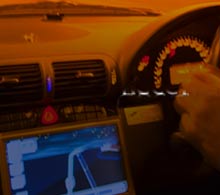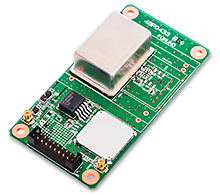Articles for ITS market Connectivity technologies attracting attention due to frequent traffic accidents
Traffic accidents are decreasing. What are the 4 reasons?
During April and May of 2019, traffic accident coverage has increased.
This coverage included an vehicle accident that occurred in Shiga Prefecture, Japan where a nursery aged child on a walk died. In addition, an accident involving bikers and pedestrians caused by an erratic driving elderly driver in Ikebukuro, Tokyo. Furthermore, sad incidents such as runaway traffic accidents due to drunk driving occurred in rapid succession throughout the country.
In this article I would like to think about the current situation and the future of traffic accident measures by the Japanese government and car manufacturers in Japan.
Looking at recent traffic accident reports you may conclude that traffic accidents are increasing, but the number of traffic accidents and number of deaths from traffic accidents are actually decreasing.
According to the National Police Agency the number of traffic accidents have almost halved in the past 10 years and by 2018 they are less than 500,000 annually. The number of fatalities from traffic accidents have fallen sharply to less than a quarter or 3532 compared to the highest levels in 1970.
There are four main reasons behind this downward trend.
The first reason is the improvement of basic vehicle performance including "Run, Turn, Stop, etc.". The parts quality that make up the vehicle, including the body, engine, suspension, and tires have also improved. The overall performance of vehicles has also improved. The precise movement of the car to the driver's input leads to safer and more secure driving, resulting in fewer accidents.
The second reason is the development of better infrastructure including roadways. During the 1970’s unpaved roads were prominent in some parts of central Tokyo, but now most of the major roads in Japan are paved. This has made it possible to better utilize basic vehicle performance characteristics including "Run, Turn and Stop". Particularly in cases of rain and snow, the safety of vehicles and pedestrians has increased.
The third reason is the improvement of vehicle crash safety performance. Development of a vehicle body structure has advanced to reduce damage to passengers in the event of a collision. In addition, from the viewpoint of pedestrian protection new technology is introduced including the materials and shape of the outer body surfaces. Recently vehicles equipped with a pedestrian protection air bag that opens from the hood have also appeared.
The fourth reason is development of preventive safety technologies to avoid or reduce the impact of collisions. The inclusion of standard equipment including ADAS (Advanced Driver Assistance Systems), which are automatic braking, accelerator and brake misplacement prevention devices are now in progress.
In addition to the above four reasons, the V2X system includes vehicle to pedestrian communication which is necessary to further reduce traffic accidents.
When will vehicle to pedestrian communications be achieved?
The V2V is Vehicle-to-Vehicle communication where vehicles are connected. V2I is Vehicle-to-Infrastructure communication where infrastructures such as vehicles and roads are connected and V2P is Vehicle-to-Pedestrian communication where cars and pedestrians are connected.
V2X is a generic term for connectivity that connects the vehicle to external devices outside of the vehicle.In recent years, in the development of automatic driving technology, full-scale tests for commercialization of V2I on expressways are in full swing. The V2V is now at a level that can be put to practical use by vehicles from this same car manufacturer. However in the future development is expected to expand from early V2V development to systems that support all vehicle manufacturers.
The recent serious traffic accidents involving pedestrians near intersections highlights the need to implement V2P into practical use quickly.
In recent years vehicle manufacturers have set up test areas that simulate urban settings including intersections within their own test courses, and are promoting technology development for Vehicle-to-Pedestrian communication.
Also major electronics companies that manufacture and sell ETC 2.0, etc. are conducting experiments for the practical use of V2P. For example, Panasonic with the 2020 Tokyo Olympic and Paralympic games in mind are conducting V2P experiments on public roads in the Odaiba area in Tokyo.
The important thing with V2P is to understand the exact position relationship between vehicles and pedestrians. Normal GPS cannot handle V2P because the position error can sometimes exceed 10 meters. Therefore we are performing localization with an error of only tens of centimeters by using Quasi-Zenith Satellite “MICHIBIKI” satellite positioning along with 1300 nationwide electronic reference points.
In addition, V2P practical use with cameras at intersections and communication in the 700 MHz band is also being developed in parallel with satellite positioning.
For full-scale practical use of V2P, cost reduction by combining various technologies efficiently is inevitable. Another issue is who pays the costs? Will the local government, police agencies, telecommunications infrastructure companies, vehicle manufacturers or vehicle parts manufacturers bear the cost? Or will these transportation-related companies and public agencies jointly bear the costs?
In order to eliminate disastrous accidents at intersections etc., it is necessary to put V2P into practical use as soon as possible.
Writer introduction

Mr. Kenji Momota Automotive journalist
His major is the world automotive industry and he is also familiar with the energy industry, IT and the aging society problem as the related fields. He acts around the world based in Japan and USA and writes for the general magazines, the technology journals and the automotive related media etc.
He is also commentator of motor race and world's motor show on TV program based on his career of the driver of Indy Racing League and NASCAR. In recent years, he has been covering about a paradigm shift from developed countries to developing countries, the motorized vehicle like EV and the telematics.
FURUNO ITS Journal
Click here for the latest articles after 2022 (in Japanese)2022
- The "realistic" self-driving roadmap shown by the Japanese government and a hands-on report on the latest Subaru EyeSight X
- Will FCVs (Fuel Cell Vehicles) Become Popular? ~New Movement in Toyota and Honda~
- The 'Complete' online sales of new cars start in Japan. Will this new way of buying cars take root?
- Many Firsts! On-Site Report from Tokyo Auto Salon 2022 - The author, who knows what goes on behind the scenes, looks back on 40 years of history. -
2021
- "Moving toward zero traffic fatalities for four-wheeled and two-wheeled vehicles globally in 2050" ~Experience on Honda's latest safety technologies~
- Tsuneishi Shipbuilding's building and DX, an exclusive visit to the main factory
- Japan's Smart City: New Moves toward Practical Use
- When will self-driving buses (service cars) be put to "full-scale" practical use?
- Utilization vehicle data during disasters
- Toyota-led Connected Technology to Transform Commercial Vehicle Business -From light trucks to large trucks and buses-
- Toyota enters the connected car "Personalization" business
- Japanese automakers' carbon-neutral strategies swept up in ESG investment
- Drive experience of the latest autonomous vehicle models and advanced driving support systems
- Will carbon neutrality accelerate the trend to strengthen LCA (Life Cycle Assessment)?
- Semiconductor shortage exposes realities of the automotive industry
- Online Autonomous Driving Contest Enhancing development of Human Resources
2020
- What happens to CASE when gas cars are banned in Japan?
- When will Flying Cars be launched?
- Expectation vs. reality:Autonomous Driving in Japan
- V2X, Becoming increasingly important in autonomous driving
- Technology of Subaru “EyeSight X”
- Lifestyle-oriented French cars gain popularity in Japan
- Human-oriented smart cities are wanted
- MaaS and CASE, how would automotive industry change after COVID-19?
- The beginning of virtualization era, triggered by COVID-19
- Trend of EV shift and consumer demands
- TOYOTA Press conference about ADAS - Releasing algorithm for "sudden acceleration suppression during attempted sudden acceleration" free of charge -
- The Japanese automotive industry in 2020 - 3 turning points -
- "Using a smartphone while driving" and "Level 3 automated driving"
2019
- Motor show business model is at a turning point - Tokyo Motor Show Report -
- Commercialization and monetization of MaaS - ITS World Congress Singapore Report -
- Android Automotive pays attention to V2X - Report from the Frankfurt Motor Show 2019 in Germany -
- Automobile Distribution Revolution and DCM (Data Communication Module)
- Connected business potential and newly proposed "eMaaS" by Honda
- 5G services for practical use are multiplying
- Connectivity technologies attracting attention due to frequent traffic accidents
- Shanghai Motor Show report -SUV, EV, Automated car & 5G-
- Drone Business roadmap and updates to Michibiki (Quasi-Zenith Satellite System)
- MaaS (Mobility as a Service) "town development." Full-scale promotion for a national project
- CES organizer states "Data Period in 2020s." Transformation of the Automotive Industry in CES, US "-CES2019 Report-"
- "Return to Origin" directed towards the age of change, automatic operation and connectivity
2018
- New proposal for Private Car Automated Driving Level and other Hot 5G Technology Topics
- Standardized EV charging infrastructure concerns in Europe, US, Japan and China - Kobe EVS 31 field report -
- Touring a pure car carrier and a test drive of the latest hybrid car
- Planning stage products are exhibited at the newly established visualized mobility service "TOYOTA MOBILITY SHOWROOM".
- Potential “Community Car-share” program promoted by local residents
- CES Asia Report 2108
- Companies attempt new Vehicle-to-Infrastructure communications, including traffic volume measurements and vehicle positioning. -ITS Asia Pacific Forum in Fukuoka-
- Geneva show in Switzerland. Flying cars and MaaS (Mobility as a Service) were hot topics.
- EV (Electric Vehicle) proposals by country
- MaaS competition through service mobilization, M & A and technical field collaboration is accelerating. - The CES 2018 Report -
2017
- Big data’s initiative and fight for the automotive industry. Cooperation among companies becomes increasingly important.
- Connected car and road-to-vehicle communication automatic operation
- ETC (Electronic Toll Collection) and ETC2.0. Current situation and projected future
- Rapid development of sharing economy
- Germany is first to recognize level 3 automated driving
- ITS EU 2017 Field Reports -Automatic Operation and the eCall-
- From Infotainment to ITS, the competitive area is spreading in the car big data industry.
- GTC (GPU Technology Conference) Report and the de facto standardization of AI (artificial intelligence)
- Renesas' new challenge! "e-AI Solution" and "Renesas Autonomy"
- The Automobile industry is shifting from a manufacturing industry to a service industry.
- The movement toward accident countermeasures for aging drivers in Japan
- Fusion of ride sharing and fully automated driving is advancing in the USA.
2016
- Overview of the Quasi-Zenith Satellite System (QZSS) and advancements toward full-scale practical use including the Tokyo Olympic Games - G-space EXPO 2016 report-
- Japan’s automated driving project "SIP-adus" will be a large demonstration experiment.
- The International Home Care & Rehabilitation Exhibition. There were many car manufactures with exhibits booths at this show.
- Japanese car manufacturers starting to concentrate on strengthening the ADAS system
- A new movement of legislation for autonomous cars
- Cyber Security and “AGL”, the new OS for automotive are hot topics in the connected car industry
- “High precision 3D map” the key future of autonomous car and pedestrian dead reckoning
- Chinese “BAT” is accelerating their business in the EV (Electric Vehicle) market
- Tesla's original connection to Taiwan and the new transportation system technologies.
- "The main topic" of the Geneva Motor Show was how to strengthen "pedestrian protection"
- The probe data business is getting more competitive
- Reporting directly from the 2016 CES show "Data services will soon become the main revenue source of automotive industry"
2015
- Do the automated driving systems need the GNSS (Global Navigation Satellite System) ?
- ETC Version 2.0 is coming soon. A new service was announced at the Tokyo Motor Show and the possibility that is could be used as a device for older drivers.
- "Connected Horizon" and "eHorizon". Germany's leading parts supplier accelerates strengthening of "Big Data" for business



 Technical display of air bags for pedestrian protection by SUBARU
Technical display of air bags for pedestrian protection by SUBARU Display of V2P by Panasonic
Display of V2P by Panasonic An experiment on V2P conducted by Panasonic at Odaiba, Tokyo.
An experiment on V2P conducted by Panasonic at Odaiba, Tokyo. GPS/GNSS Receiver&Chips and Modules (positioning and timing)
GPS/GNSS Receiver&Chips and Modules (positioning and timing)